Wonderllic personel test PDF

| Title | Wonderllic personel test |
|---|---|
| Course | Qualitative Psychology |
| Institution | University of Delhi |
| Pages | 12 |
| File Size | 212.2 KB |
| File Type | |
| Total Downloads | 55 |
| Total Views | 200 |
Summary
An assessment by katy...
Description
Wonderlic personnel test
I.
INTRODUCTION
The Wonderlic contemporary Cognitive Ability Test was formerly known as Wonderlic Personnel Test (WPT-R). This test is an assessment use to measure cognitive ability and problem-solving aptitude mainly for employee selection. It is a 50-question multiple-choice test. It covers mainly general knowledge in math and English, but also evaluates your ability to reason and use logic. This test was developed by Eldon F. Wonderlic (1909-1980). It is one of the most widely used and respected employment intelligence tests for the selection and placement of business personnel and for vocational guidance. The Wonderlic measures an individual’s ability to learn, adapt, solve problems, and understand instructions. It is a valid predictor of future job performance, and may be used for positions ranging from routine to complex. Including the Wonderlic in your hiring process can lower your recruitment and training costs –saving you time and money. The WPT-R test helps evaluates the candidate in the following areas: Problem solving Ability to learn new skills and job requirements Potential job satisfaction Training response Some of the questions in WPT will test topics the following:
Abstract Reasoning
This section tests spatial reasoning, pattern recognition, and abilities to manipulate and visualize 2D and 3D shapes. These include questions that will have you manipulating shapes such as tiles or folded pieces of paper.
Verbal Reasoning
The Verbal Reasoning questions test your knowledge of the English language and your logical and deductive reasoning abilities. These questions generally consist of grammar, analogies, vocabulary, and drawing conclusions. There will also be questions that cover topics like metaphors, anagrams, word scrambles, sentence scrambles, word groups, and identifying words that are similar or different.
Wonderlic personnel test
You will be asked to recognize if a pair of words are synonyms or antonyms of each other, or if they are unrelated. Other questions will have you reorder sentences that may not make sense grammatically. Another question type will require you to use your deductive reasoning skills; You will be presented with several statements, and then be asked to deduce if another statement is true or false based on the original ones.
Numerical Reasoning
The Numerical Reasoning category will test your mathematical abilities the most. Many of these questions are word problems, so they are not just math problems, but are a combination of words and numbers. They will test your reading comprehension abilities in addition to your mathematical abilities. Questions cover topics such as algebra, percentages, ratios, decimals, and averages. There will also be number series questions, where you will have to look at a series of numbers and figure out what number comes next in the sequence. These questions will likely be the most difficult and timeconsuming questions, especially since you will not be allowed to use a calculator. While the material covered on the test is not particularly complicated or advanced, the test is difficult because of its time constraints. I recommend that you start by taking my free Wonderlic practice test which is offered below to get a feel of the real thing.
The WPT has a shorter version called the Wonderlic Personnel Test—Quicktest (WPT-Q), which is of similar design but contains only 30 questions. This short form of the WPT is sometimes used as a screening procedure before an interview or to qualify a candidate to take the longer test version. The WPT-Q is not proctored, and you will probably be asked to take it online at home. Then, if your score is sufficient, you will be called in to the employer to take the WPT-R. II.
HISTORY
Wonderlic personnel test was the first short-form cognitive ability test. This test was developed to measure general cognitive ability in the area of math, vocabulary and reasoning. It was created in 1936 by E. F, Wonderlic. It was originally designed to help in employee selection of companies in the 1940s but later it was also use both by the Unites States Armed Forced and the National Football League for selection purpose.
Wonderlic personnel test
During the World War II, the Navy used this test to select candidates for piolet training and navigation. During 1940-1960, it was supplied for free as E. F. Wonderlic wanted to perfect the test. In 1970s Tom Landry, who was a coach of the Dallas Cowboys, was the first to use this test to predict the players performance. This test is still use by the national football league as a pre-draft assessment. In short, this test attempt to screen candidates for certain jobs within the shortest possible time. It may be termed as a quick IQ test.
III.
TYPES OF QUESTIONS ON WPT
The questions on the Wonderlic Cognitive Ability Test are presented in an open response manner. The questions get harder as the test-taker approaches the end of the test. The sort of questions can vary, but they typically include the following subjects:
Math questions
Following directions
Arrangement of sentences
Analogies
Geometric figure analysis
Judgement
Vocabulary
Logic
The Wonderlic features four sections. Test administrators use the results to predict how well you will perform in the job position you have applied for. An employer may choose to administer specific sections or all the sections of the test.
Wonderlic personnel test
The Wonderlic Cognitive Ability Test
Wonderlic Cognitive Ability Tests are commonly used by employers. Employers from a wide variety of industries use this test. They use it when recruiting and selecting new employees. Their aim is to measure the candidate’s ability to learn, problem-solve, adapt, and understand directions.
The Wonderlic Cognitive Ability Test comes in two different formats:
WONDERLIC COGNITIVE ABILITY PRETEST this test is not proctored. The test gives the employee an overall understanding of the candidate’s abilities. It is generally used as an initial step in the applicant’s recruitment process.
It may be used to see if the applicant is permitted to move on to the next step.
WONDERLIC CONTEMPORARY COGNITIVE ABILITY TEST
This is an in-depth test. It is proctored.
Some of the abilities that are measured are: Analytical abilities, Skill at providing speedy responses and Ability to make decisions under pressure.
Improve employee productivity and reduce turnover.
It comes with a time-frame of 8 minutes.
The Wonderlic Personality Test
The Wonderlic Personality Test assesses the personality characteristics of the applicant. The aim of the test is to predict whether or not a candidate is a good fit for the job.
It gives employers an understanding of the candidate’s popular personality characteristics. It is used to predict job performance in a particular work position.
Wonderlic personnel test
Employers use this test to match applicants with the work positions that are suited for.
Employers see if an applicant’s personality traits are a good fit for the job positions, they are applying for.
The Wonderlic Skill Test
The Wonderlic Skill Tests give a quick overall assessment of the basic verbal and quantitative skills of the candidates. This test is designed to measure the readiness of an applicant, to work at an entrylevel job. The aim is to minimize training time and turnover. This is done by finding candidates who can carry out the tasks of the position they are applying for.
Employees use this test in relation to any job that needs basic mathematical calculation skills. They may also use it to identify the oral and written communication of the test-taker.
Wonderlic personnel test
The Wonderlic Skills Tests include:
The Wonderlic Skills Tests
The Wonderlic Perceptual Ability Test Assesses a candidate’s ability to recall numerical and alphabetical information
IV.
WPT IN GLANCE
Wonderlic Basic Skills Test Assesses general verbal and mathematical skills
Wonderlic Office and Software Skills Test Assesses basic software and computer skills
Wonderlic personnel test
TIME: Candidates are given 12 minutes to complete the regular Wonderlic Personnel Test™ (50 questions) and 8 minutes to answer the questions on the quick version of the test (30 questions). The time element is inserted for a purpose: employers want to know how well you can think quickly or when under
SALARY: If an employer has more than one job open, a higher score on the Wonderlic test just might qualify you for the higher-paying job or make it possible for you to start with higher than an entry-level position.
Wonderlic personnel test (WPT-R) in a glance COST: There should be no cost for taking Wonderlic test as it will be part of the interview, however in some cases payment may be required. Calculators are not allowed while doing the test, but scratch paper and pencil for notation/calculation purposes.
V.
TY: You will normally only have one chance to take the Wonderlic® test, although there are a few companies who grant a second chance. Sometimes, the test will be the first part of an interview or given before the interview begins and failure to attain a certain score can bring the interview, and your job chances, to a halt.
RELIABILITY AND VALIDITY
Norms According to Wonderlic, Inc., the average score for the test is 20 out of a possible 50. A person who scores an average of 10 and above is considered literate and, therefore, seen by most employers as suitable for less demanding professions. Average test scores can significantly vary between different professions. For instance, an average score for a chemist is set at 31 while that of a cashier is set at 21. These two professions are entirely different, and they need individuals with different abilities to perform these jobs well. For job applicants, scoring well can be extremely important to set yourself apart from others competing for the same position. To increase one’s chances of getting a job, whether it’s as a nurse or an engineer, you can only improve your chances by posting a higher-thanaverage Wonderlic score.
Reliability In a study of the Wonderlic's test-retest reliability, conducted in 1992, Stuart McKelvie "concluded that conscious repetition of specific responses did not seriously inflate the estimate of test-retest
Wonderlic personnel test
reliability." To put it simply, one's memory of some of the answers does not significantly affect one's score on the Wonderlic. In 1982, Carl Dodrill conducted a study in which 57 adults were administered the Wonderlic twice over a five-year period. In the Journal of Consulting and Clinical Psychology, Dodrill reported that the test-retest reliability for the Wonderlic was .94. (Excellent reliability). According to a 1989 article in Psychological Reports, the Wonderlic scored a r=.87 on the reliability scale compared along with the Pearson test score of r=.21. Test-retest reliability has been found to range from .82 to .94(Geisinger, 2001; Dodrill, 1983) and parallel forms reliability has a range of .73 to .95(Geisinger, 2001). The Kudor-Richardson coefficient establishes internal consistency at .88(Geisinger, 2001). Validity The WPT user’s manual shows the results of numerous validation studies. Construct validity is addressed by providing correlations with other tests. The manual includes information on tests the WPT has been correlated with, the citation of source studies, and the provision of information about sample size. Tests with which the WPT shows a high correlation are well characterized as tests of general cognitive ability such as IQ tests and achievement tests (Belcher, 1992; Bell, Matthews, Lassiter &Leverett, 2002; Geisinger, 2001; Hawkins, Faraone, Pepple, Seidman & Tsuang, 1990; Matthews& Lassiter, 2007; Schmidt, 1985; Schraw, 2001; Schulte, 2004. The WPT shows an especially high correlation with the Wechsler individually administered IQ tests. Adding to the construct validity, there are low correlations reported with measures of personality, social judgment, interest inventories, and emotional adjustment. This provides a proper nexus of correlations for a construct validation. Empirical validations also are reported, and the sample size is shown for each study. For each of the validity coefficients, the business occupational category such as General Office, or Supervision is provided. Specific positions are reported, ranging from bank tellers to utility crew, and from first-line production supervisors to bake shop managers. Validity studies are also cited for the non-business categories, including Decision Processing, Engineering, and Professional. Validity coefficients also are provided for Vocational Training Programs. VI.
APPLICATION
The Wonderlic test, as a vocational and intelligence test, falls under the field of Industrial and Organizational Psychology. As personnel test the Wonderlic is used to gauge an applicant's job
Wonderlic personnel test
potential, educational potential, and training potential. Six forms of this test are made available (A, B, C, D, E, and F) in which Wonderlic suggests that when two of these versions are to be used, the best combinations are A and B or D and F. However, a study conducted by psychologists Kazmier and Browne (1959) shows that neither of these forms can be regarded as directly equivalent. While there is no lack of tests that could be used in place of the Wonderlic, such as the IQ or the Mechanical Aptitude Test, it is a quick and simple vocational test for personnel recruitment and selection. The Wonderlic test has been peer reviewed by the American Psychological Association and has been deemed worthy of field applications to the industrial use of personnel testing. The following are the institution that use Wonderlic test are as follow: 1. The NFL In order for an aspiring athlete to have a good chance of being selected by a NFL, they must have a good track record as a football player in the college that they belong to in addition to having to meet the minimum score of the position that they play for. This means that if you want to be selected as a quarterback recruit, your Wonderlic test score must be at least 24; if you want to be a halfback, you must get a score of at least 16; and so on. However, the score of an athlete is just one of the many factors that NFL scouts will take into consideration, and there are many instances where a low-scoring player got selected in the first round of the NFL draft due to how exceptional they were on the field. 2. Educational institutions Some universities and colleges are known to be highly prestigious because of their strict requirements as well as their entrance exams. If one is an incoming freshman, there is a high chance that on top of getting a good GWA or GED, you will have to pass the Wonderlic assessment and meet the minimum score of the institution. The minimum passing score will depend on two things: the prestigiousness of the educational institution and the course that you want to take. This means that if one is aiming to join a well-known school on top of a difficult field like medicine or even criminal justice or nursing, then you can expect needing to get a score of 20 or above. 3. Private corporations and companies In order for them to find the best possible candidate for the job, companies utilize a special version of the Wonderlic, known as the Wonderlic Personnel Test. This is to confirm that the person has the
Wonderlic personnel test
minimum cognitive skills needed to function or succeed in the job that they are applying for and to prevent a ‘bad hire’ from getting the position, even if their resume or application looks highly enticing. Like the NFL and college admissions version of the Wonderlic exam, applicants will have to do their best to try to meet the minimum score that the company wants for that particular position. Unfortunately, this minimum score is fluid and varies from company to company. In the case of them needing to hire a lot of people, it is not uncommon for them to lower the mandated score of their organization. If there is only be a few or even just a single position available, and there are dozens applying for it, then it is not uncommon for the company to raise the minimum passing score in an attempt to further boost the competition. VII.
CRITICIS
Evidence for criterion validity is lacking and more research in this area could definitely be used, especially when it comes to verifying concurrent validity apart from the potential influence of educational attainment. Drdege (1972) raised the issue, that WPT can lead to unfair disadvantages and even discrimination against those who are less educated. Unfortunately, the shortcomings of the WPT do not end here. Several have also criticized the overall organization of literature pertaining to the WPT as well as the apparent lack or withholding of information. Foley (1972) has several criticisms related to the WPT manual and corresponding publications, faulting them for containing a lack of organization, a lack of information, particularly in providing inadequate data to evaluate the measurement, in addition to having poor presentation. Foley (1972) also believes the measure is most appropriate for a limited population, which primarily includes white-collar workers. He additionally notes that, despite having many parallel forms, the widespread use of the test impairs its effectiveness due to the resultant familiarity with the WPT. Drdege (1972) expresses similar concerns about the use of “cutting scores,” in which some scores are considered too high for certain occupations. Drdege (1972) says that there is no evidence to support this practice and that there is no proof that it is advantageous to anyone, whether it be employers or job seekers. Edinger et al. (1985) and Hawkins et al. (1990) both found the WPT to be an inappropriate measure for populations suffering from mental illness. Hawkins et al. (1990) noted that types of brain damage, visuospatial disabilities and even a motivational state could undermine the value of the WPT as a measure of intelligence (p. 199). Additionally, the single-score format of the WPT is a
Wonderlic personnel test
limitation for such populations, as potential functional deficiencies will not be detected, as is the case with other measures (Hawkins et al., 1990, p. 200). Geisinger (2001) also raised issue with the speeded nature of the test, postulating that this may provide a disadvantage for those with disabilities, below-average English skills and older populations. Finally, another probable flaw has arisen pertaining to the testing of non-native English speakers and to the recent development of foreign language equivalents of the WPT. Belcher (1992) points out that the WPT makes no accommodations for non-native English speakers and that the speeded nature of the test likely causes these individuals to be disadvantaged. VIII. CONCLUSION The Wonderlic test measures how well you do under pressure. It tests your reasoning and arithmetic abilities, as well as your ability to interpret differences among the information provided to you. With only twelve minutes to answer fifty questions, many who approach the test without much prior introduction and a load of mispla...
Similar Free PDFs

Wonderllic personel test
- 12 Pages
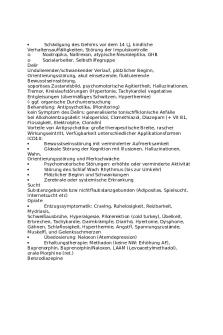
Test - test
- 1 Pages
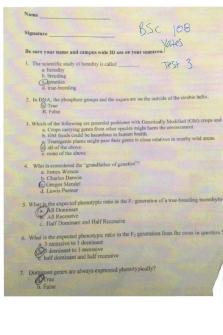
Yates Test 3 - Test
- 7 Pages
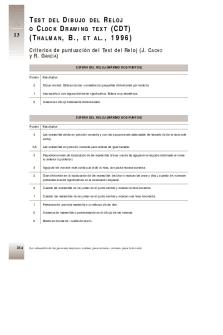
Test-reloj - test
- 4 Pages
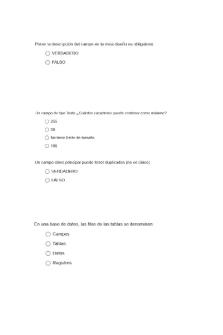
Test Access 2010 - Test
- 6 Pages
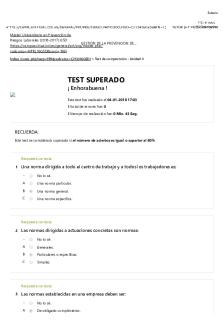
Resultado Test 842 - TEST
- 2 Pages
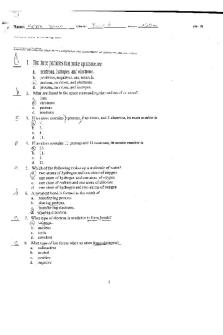
AP. Bio. Test - test
- 4 Pages
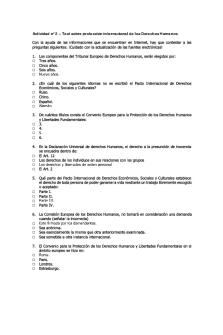
Test
- 4 Pages
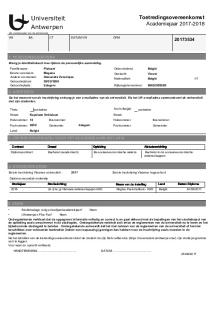
TEST
- 1 Pages

Chapter 4-test - test
- 23 Pages
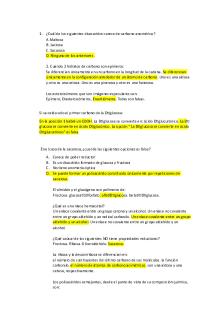
Test preguntas - test
- 4 Pages
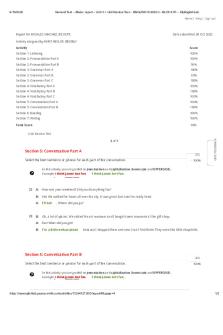
Test 3 - 5 - test
- 2 Pages

PET TEST Full Test
- 35 Pages
Popular Institutions
- Tinajero National High School - Annex
- Politeknik Caltex Riau
- Yokohama City University
- SGT University
- University of Al-Qadisiyah
- Divine Word College of Vigan
- Techniek College Rotterdam
- Universidade de Santiago
- Universiti Teknologi MARA Cawangan Johor Kampus Pasir Gudang
- Poltekkes Kemenkes Yogyakarta
- Baguio City National High School
- Colegio san marcos
- preparatoria uno
- Centro de Bachillerato Tecnológico Industrial y de Servicios No. 107
- Dalian Maritime University
- Quang Trung Secondary School
- Colegio Tecnológico en Informática
- Corporación Regional de Educación Superior
- Grupo CEDVA
- Dar Al Uloom University
- Centro de Estudios Preuniversitarios de la Universidad Nacional de Ingeniería
- 上智大学
- Aakash International School, Nuna Majara
- San Felipe Neri Catholic School
- Kang Chiao International School - New Taipei City
- Misamis Occidental National High School
- Institución Educativa Escuela Normal Juan Ladrilleros
- Kolehiyo ng Pantukan
- Batanes State College
- Instituto Continental
- Sekolah Menengah Kejuruan Kesehatan Kaltara (Tarakan)
- Colegio de La Inmaculada Concepcion - Cebu


